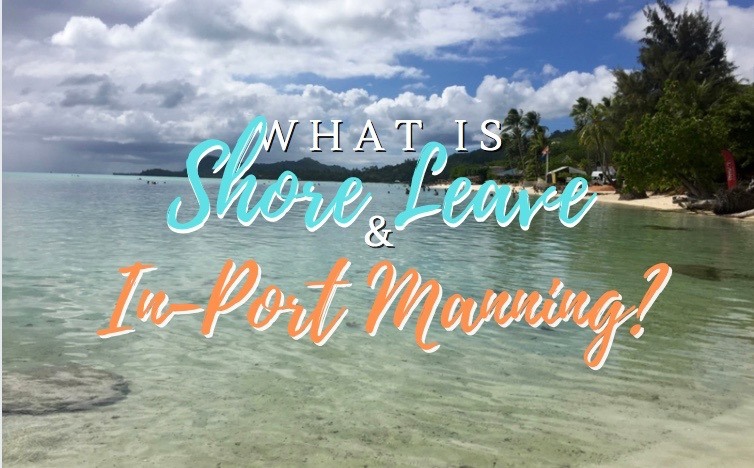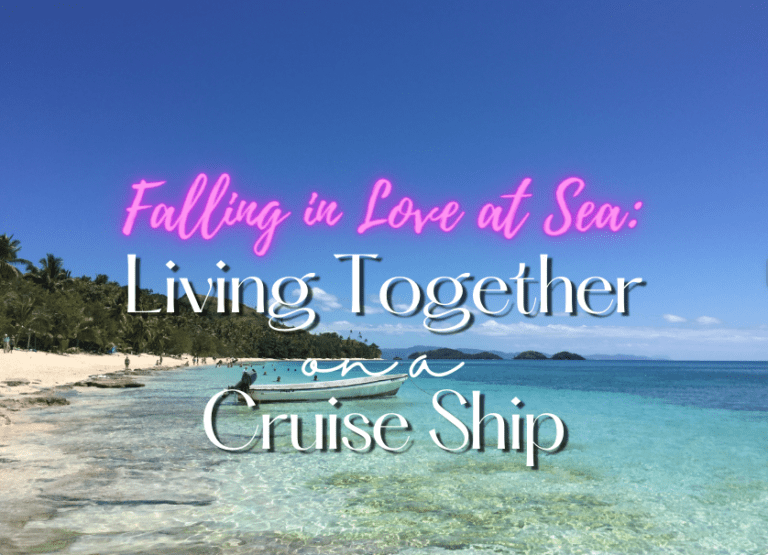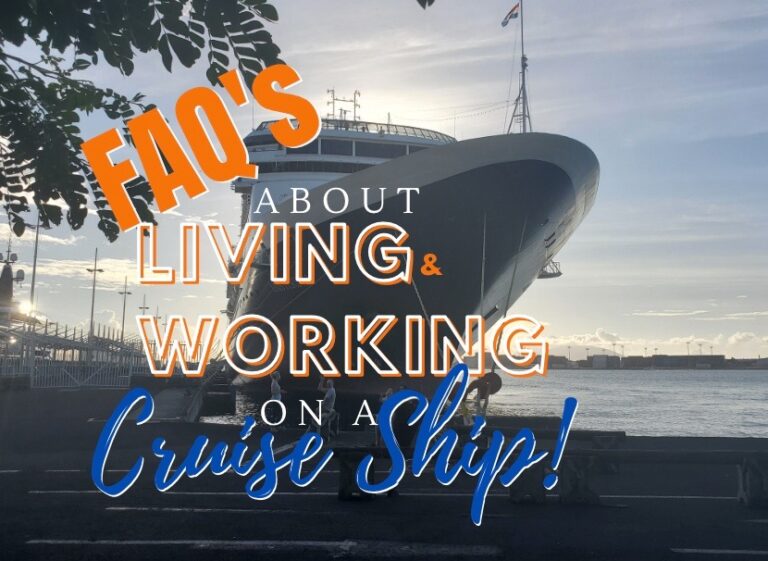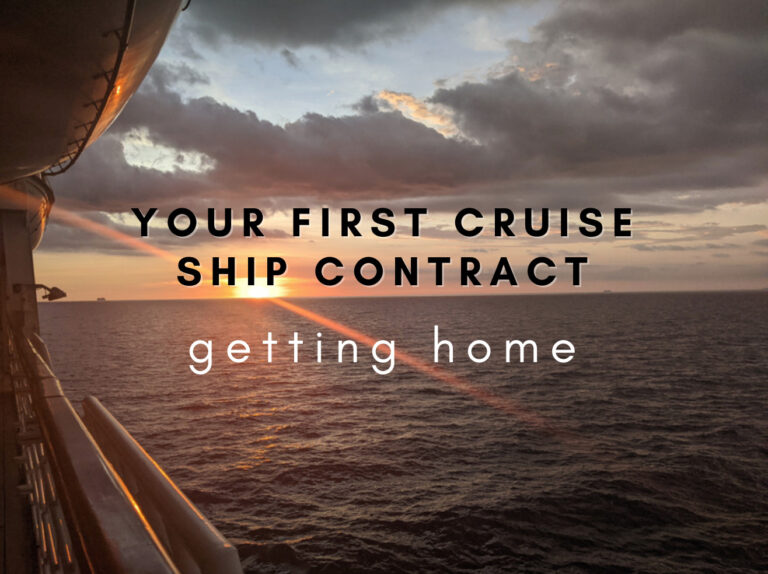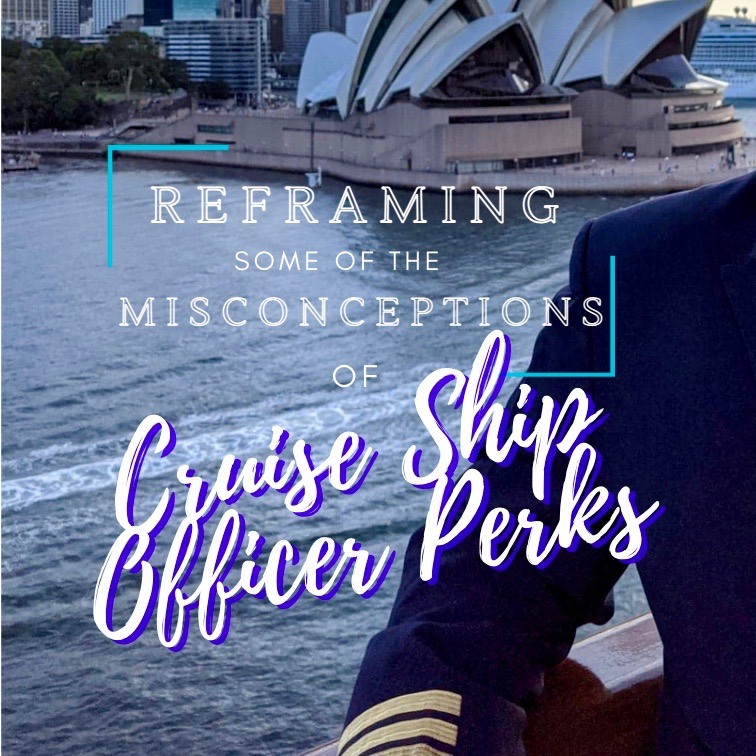What is Shore Leave & In-Port Manning?
One big reason why people go to work on a cruise ship is explore and see the world. While the views of the ocean from the ship are beautiful, the real adventure comes while exploring the ports while on shore leave. While shore leave is great there are some reasons why it might not be granted. And, even when it is granted things such as In-Port Manning might keep the crew onboard. What does IPM stand for on a cruise ship? And, what is shore leave and in-port manning and how are they related?

What is Shore Leave?
Shore leave is when crew are allowed to go ashore while the ship is in port. For shore leave to be granted both the local authorities and the onboard management (in this case meaning the Master of the Vessel – aka the Captain), have to approve it.
Reasons Shore Leave Might Be Denied
Local authorities may not approve shore leave if there is a higher security risk in port. This is typically determined by the MARSEC (Maritime Security) level. This is determined based on the International Ship and Port Facility Security Code or ISPS. If the area around the port is deemed unsafe then the local authority can deny shore leave. If this were to happen most likely it would not only be crew that couldn’t disembark but passengers as well.
I have only been on a ship once where the ship docked in MARSEC level 3. In general if there is a high level security risk the port will be cancelled.
There are also unusual and unforeseen situations that might cause the local authorities to deny shore leave. My husband had shore leave for passengers and crew denied because of an earthquake and they couldn’t determine whether or not there was structural damage to the terminal building.
I’ve also experienced it where the crew had a curfew – say 1:00am – on an overnight port.
However, for the most part if shore leave is denied it’s only for part of the day and the likely culprit is…
Nearly All Safety Drills Happen When the Ship Is In Port
Alternatively to the local authorities denying shore leave, the onboard management may also deny shore leave. Most often if crew are denied shore leave it is because of a safety drill.
Crew regularly participate in safety drills. Sometimes these drills are for the entire crew and sometimes they are only for part of the crew. Organizations like the Coast Guard or other port-state entity will also come onboard to inspect how these drills are run to ensure that the ship is meeting the necessary safety standards to operate.
When there is a full crew drill (often referred to as General Drill) either for regular onboard safety procedures or for a port-state inspection, shore leave will typically be suspended until the drills are satisfactorily completed. Then, usually over the ships public address system, the Captain will say that crew shore leave is granted and nearly everyone is happy.
So, if the Captain and local authorities have said shore leave is okay, why do some of the crew have to stay on the ship.
If Shore Leave Is Granted Why Would Crew Stay Onboard?
For the most part if shore leave is granted the crew is free to go ashore. However, there are three (ish) main reasons that crew would not be allowed to go ashore even when shore leave is granted.
3. Visa Restrictions
There are some countries that require certain visas to be able to visit them. And, for most countries this is also dependent on where you are from. For instance when visiting China I needed a visa (as I’m a US citizen) but my husband (a UK citizen) didn’t need one.
Some places require the entire crew to have the necessary visas while others only require the crew to have the visa if they want to go ashore. Want to talk about having some FOMO (fear of missing out) – have all of your friends climb the Great Wall of China but you are stuck onboard the ship because you don’t have the right visa.

In addition to countries that have additional and/or restrictive visa requirements, there are also countries – such as the United States – that have require you to have a landing card, known as an I-95, before you can have shore leave in a US port. An I-95 is issued by Customs and Border Patrol (CBP) upon inspection – which usually happens at the start of the next voyage. I was lucky and didn’t have to worry about this being from the US. I had friends though that would join a Hawaii cruise in San Diego only to not be able to get off the ship in Hawaii because they hadn’t gone through their CBP immigration inspection yet. 🙁 No aloha fun for them.
2. Work
Waiting for Inspections
When I worked onboard I happened to be in charge of an area that was subject to the various inspections and audits that happened. Many inspections – such as with United States Public Health – are unannounced. The USPH officers show up to the ship while the ship is in a US port and then pretty much everyone that is a supervisor (or works in certain departments) is largely stuck waiting around until the inspectors get to their area of the ship. It wasn’t the most fun of days onboard.
Actually Having to Do That Thing Called Work
What? Wait? Crew have to work on a ship? On occasion crew can’t go ashore exactly when they want to because they have to work. For the most part supervisors do a good job of balancing crew responsibilities to rotate through time ashore. Not every supervisor is great (and not every employee is great), but for the most part everyone is trying their best.
On occasion I must say I have noticed people forgetting that they are onboard to do a job and may have to forgo doing an epic “live your best life” adventure in port to actually work.
But, yes, on occasion crew can’t go ashore because they have to work. Yes, even when the ship is in port and most of the passengers are ashore.
1. In-Port Manning
So, shore leave has been granted, you don’t have to work, their are no inspections, and no specific visa requirements for this port and yet you still can’t go ashore.
Let me introduce you to a little thing called In-Port Manning. In-Port Manning, or IPM, is an excellent excuse to nap all day, and an easy opportunity to screw over your friends.
Let me explain.
What Does IPM Stand For on a Cruise Ship?
On a cruise ship the abbreviation IPM stands for In Port Manning. A ship has a whole bunch of rules it has to follow, amongst these are safety rules. Amongst the safety rules are a minimum number of crew that have to be onboard at all times (including when the ship is in port) to respond to an emergency should an emergency happen.
Safety Functions
The crew are divided up into different safety functions. While the ship is sailing everyone that has a safety function is required to be able to respond in an emergency.
However, when the ship is in port there doesn’t need to be as many crew onboard to respond to the incident. So, say there were 20 crew normally in a specific safety function, while in port maybe only 10 need to be onboard. These are just examples. The official number of crew needed for each safety function and then what their in port manning amount is decided by the head office and assigned by the Deck Office onboard.
Minimum Manning
So, in the example given, 10 of the crew from that safety function have to be onboard and 10 can be ashore. This basically means that if you were in this rotation every other port you would have to be onboard. This is normally set up in a schedule and people follow it and it all works out. Most supervisors will try to make it so that the days that you have to be on working correspond to the IPM schedule so you don’t have a day with too much time off that you can’t go ashore. If you are stopping somewhere that you really want to go you can trade with another crew member (most of the time) and it all works out.
And then there are the times that Random Crew Member #1 is like, “well, all my friends are going to the beach and I want to go with them, surely someone else will stay onboard.” And, off they go. Only to have Random Crew Member #2 try to disembark the ship later in the day and be told on the gangway that they can’t because they need to stay on for IPM.
They then tell the Security Officer, “but it’s not my day!” The Security Officer has no say in this. The computer system while disembarking the ship has realized that there are already crew members ashore from that safety function. So, while Random Crew Member #1 went ashore with their friends to the beach that meant that Random Crew Member #2 got screwed over from their time ashore having fun.
Now, with all this being said, IPM isn’t that bad. It is in fact, part of life onboard. It’s a great excuse to get some extra sleep, do laundry, tidy your cabin, or maybe even do that paperwork you’ve been avoiding.
Are There Any Other Reasons Crew Might Not Go Ashore?
Of course there are! It may be hard to believe that the ship could be in beautiful places and the crew would choose to stay onboard even when they don’t have to, but it absolutely happens! Crew might stay onboard to get some extra sleep, do laundry, or maybe they have found they spend way too much money when they go ashore and they are trying to cut down on their spending. There are tons of reasons why someone might choose to stay onboard versus go ashore.
Final Thoughts on Shore Leave and In Port Manning
Shore leave and getting to explore beautiful places is an incredible perk of the job – through which I have been lucky enough to explore so much of this world. However, working on a cruise ship is still a job and things such as in-port manning will almost always be a part of that job.

